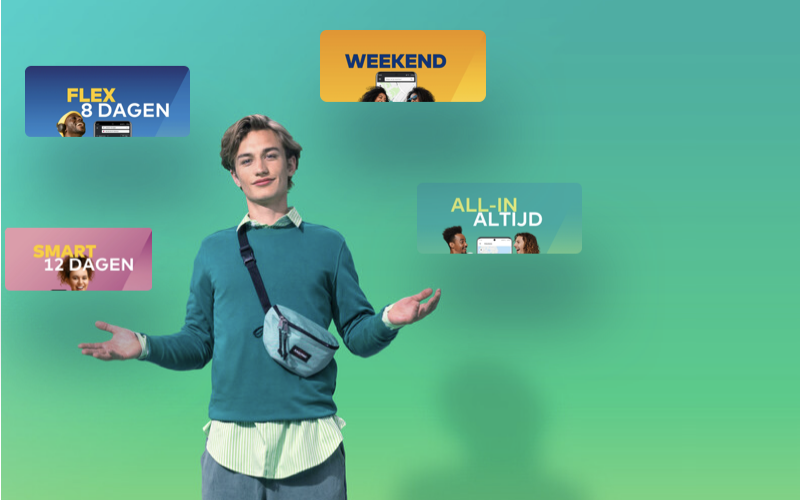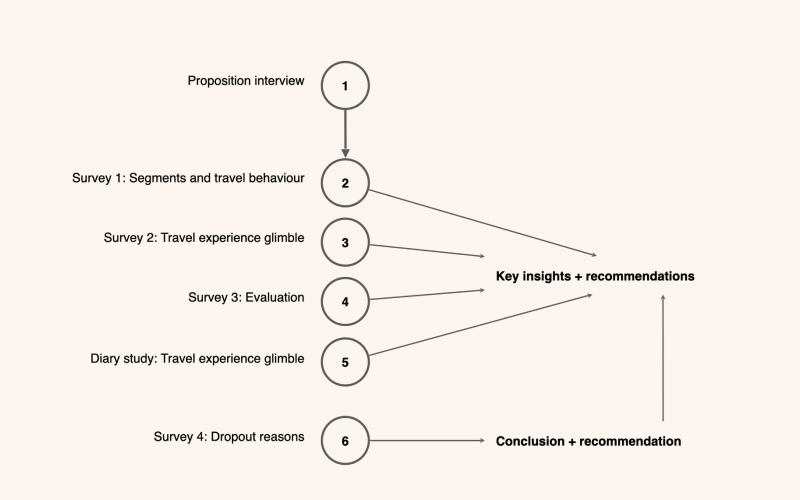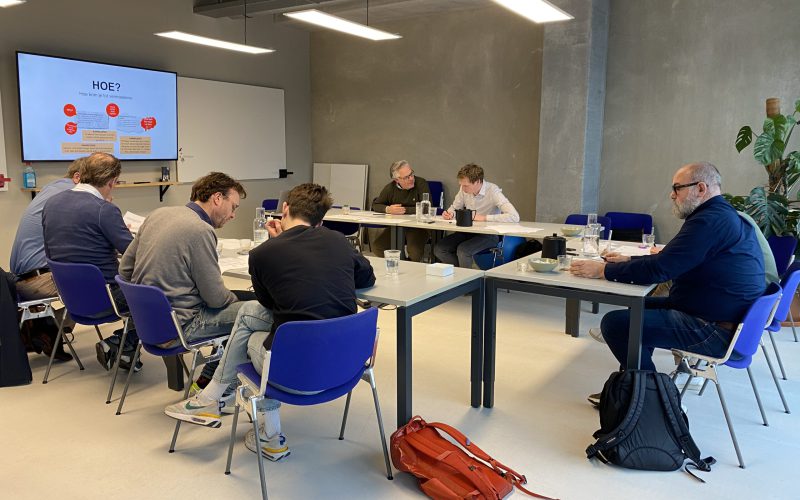Arriva/ glimble
travel behaviour research

Project details
Duration: 3 months
Client: Arriva/ Glimble
Team: 2x UX researcher (me), Strategist, Project manager
My tasks: Research setup/ conducting diary study, analysing results, stakeholder management, reporting
Deliverable: Report, co-analysis workshop
The project
Glimble is a mobility-as-a-service app introduced by Arriva in 2021. Currently, they have 300.000 active users in the Netherlands. They provide a planning and payment service for travelers to travel at every public transport provider using 1 app.
Glimble is exploring a new proposition: monthly subscriptions. Since this is a new service for both glimble and customers, they wanted to first validate the concept with real users.
Glimble asked Hike One to conduct a research study with a select group of participants. These ‘beta testers’ would be selected to buy a subscription and use the service for a period of 4 weeks.
The 4 propositions which were tested were:
– Weekend onbeperkt (weekend unlimited travel)
– All-in (always unlimited travel)
– Flex 8 (pick 8 days per month to travel unlimited)
– Flex 12 (pick 12 days per month to travel unlimited)
The process

Approach
A mixed method research study was conducted, which consisted of a diary study (qualitative part), and 3 enquetes (quantitative part). My responsibility was to setup and conduct the qualitative part, the analysis was done with the other researcher to compare the data found in the study.
A 4th enquete was conducted by me in the middle of the study to make up for the amount of dropouts for the quantitative part. This way this group could still provide meaningful data even though they did not make use of the travel subscription.
Diary study
The diary study was performed with 12 participants, 5 weekend, 2 all-in, and 5 flex. Recruitment was a big challenge during the study, ideally 5 participants would be recruited for each subscription to ensure rich data for each proposition. However, due to the lack of participants a decision was made to do the diary study with 2 participants for the all-in subscription. This would create the risk of receiving no meaningful data for the all-in subscription but the reward would be to still conduct the diary study and receive data about the user travel experience, improve overall user experience, and spot opportunities for alternative propositions or products.

Kick-off stakeholders
The diary study kick-off was done by a self made Miro template (figure 3). The goal of the kick-off was to give insights in the expected outcomes of the study and align them with the wishes of the stakeholders. This proved to be useful since the proposed study measured only moments when the participants were traveling with public transport, glimble was also interested in moments participants choose to not go with public transport and take the bike or car.
Also an advice regarding the study incentive to support the recruitment process as the stakeholders did not have any experience in recruiting. The incentive was based on a NN article to prevent dropouts in diary studies.
Personal learning: A lot of stakeholder meetings were done at the start of the project. This helped us to understand the context better and ask better questions during our research study
Conduct
After we had the greenlight for the study we planned in the diary study kickoff for the participant side. This kick-off had two reasons:
1. Provide all necessary information for the participants, the planning of the diary study, the activities to be done, a to-do list to remind them on what to do, and our contact details on where to ask for feedback and information.
2. To get a verbal agreement to participate in the full study. This was to ensure they understood the amount of work they would have to do to perform the study and if they were okay with that.


participant support
During the study, Google forms were sent through WhatsApp for the participants to fill in. Every morning the prompts were being checked to see if the participants understood the activities. in case the information was off-topic or limited some feedback would be given to help the participants reflect better on their experiences.
Whatsapp was used to ensure an easy communication channel for participants as WhatsApp is used as a common app for most people.
We paid very close attention to participant support as we could not afford any dropouts in the study. In the end those tricks paid off since we only had 1 person dropping out from the study. The first few data entries of some participants lacked meaningful data as they found it difficult to reflect on the positive and negative experiences during their travels. However, after some feedback most participants were able to provide rich data regarding their experience.
Personal learning: Participants need guidance to remember to fill in their activities and reflect on their activities. A diary study is often new for them and it is not build into their routine, this should be remembered when setting up the study.
Analysis
In the final week of the conduct phase we started with the analysis phase. For the quantitative part we failed to reach the ideal amount of 100 participants for the study, therefor we decided to focus on the qualitative answers in the enquete and the diary study.
First, we imported all the data into Airtable, and we started tagging the data by using context cards. The context cards are created by reading the data, and writing down how you interpret the data, also the quote itself, the interpreter, and the method are written down to always find the origin of the information. The data was analysed by multiple researchers to prevent bias in interpretation.

Secondly, we clustered all the context cards into bigger themes. This way we could spot trends that existed from all the data (figure 7).

The final step was to write down conclusions and key insights from the study. We noticed that we had a hard time coming up with the most important insights since we had an enormous amount of data. We solved this by having one researcher interview the other researcher. This provides more structure as one researcher is focussing on the data and the other one on what to conclude from this data. Another solution to this problem is to look at how much the trend exists across studies, trends that were visible in the qualitative study and the quantitative study were most important.
Personal learning: Being able to trace back an insight to the quote and context makes it easier to estimate the value of the insight, and this prevents interpretation bias.
Deliverable
We presented the project using a Google slides presentation, the presentation also served as a report that could be shared. The key insights were supported with anonymised video quotes that participants stated during the diary study. This helped to create empathy for the pain or gain of the user.

Another deliverable was to have a co-analysis session with the client. This session was organised to create more empathy for the travel experiences of the users. And to create actionable next steps based on the research data.

